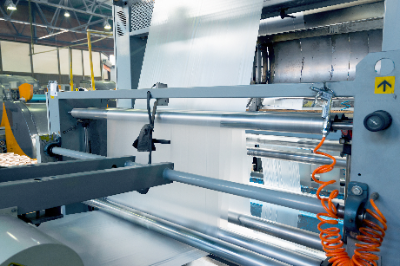What Is Film Processing?

Film processing refers to a method of enhancing the strength of films by thinly molding resin materials, such as plastics, and adding features like coatings.
There are various processing methods for film processing, but this article will primarily focus on explaining fundamental molding techniques.
Molding Techniques for Films
Molding techniques for films primarily include melt extrusion molding, solution casting molding, and calender molding. Each of these is explained below.
1. Melt Extrusion Molding
Melt extrusion molding includes methods like the T-die method and the inflation method to form coatings. It involves melting thermoplastic polymers and extruding them through a die slit.
2. Solution Casting Molding
Solution casting molding is a process where polymers dissolved in a solvent are extruded through a die slit.
3. Calender Molding
Calender molding involves passing heated rollers over polymer or resin materials, thinning and molding them.
Stretching Methods for Films
In the film manufacturing process, stretching films is a crucial step to alter their characteristics. The primary stretching methods for films are flat film stretching and tubular film stretching, which can further branch into uniaxial stretching and biaxial stretching for flat film stretching.
Flat Film Stretching
In the usual flat film stretching process, heat is applied to thermoplastic resins to melt them, and then they are stretched to align the film molecules in a specific direction. Before processing, the molecules in the resin are irregularly arranged, indicating non-oriented characteristics. However, introducing orientation improves the film’s properties.
Uniaxial Stretching
Uniaxial stretching aligns the resin molecules in a specific direction, enhancing characteristics in that oriented direction. Typically, uniaxial stretching is categorized into wet stretching (water tank stretching) and dry stretching.
Wet stretching involves heating the water in a tank and using it to heat and stretch the film. Although this method applies heat evenly across the film, it has temperature limitations due to the heated water, making stretching challenging. To address this, additives may be introduced when stretching at high temperatures to attempt to resolve the issue.
Biaxial Stretching
Most films available today are manufactured using this method. Films are processed through flat film sequential biaxial stretching or tubular film stretching. In some cases, flat film simultaneous biaxial stretching is utilized. Films produced through biaxial stretching have more features than uniaxially stretched films.
Sequential Biaxial Stretching
Flat film sequential stretching involves stretching the film in both vertical and horizontal directions. Multiple rolls are commonly used for this stretching process, with two-stage stretching referred to as vertical-horizontal stretching or horizontal-vertical stretching, and multi-stage stretching called multi-stage or post-type stretching.
Simultaneous Biaxial Stretching
Flat film simultaneous biaxial stretching also stretches the film in both vertical and horizontal directions simultaneously. While sequential biaxial stretching is advantageous for high-speed film formation, simultaneous biaxial stretching allows molding with less energy consumption since it simultaneously stretches in both directions.
Other Processing Methods
Another processing method is tubular film stretching. This method includes stretching techniques such as static pressure, flow pressure, octopus type, and horseshoe type.